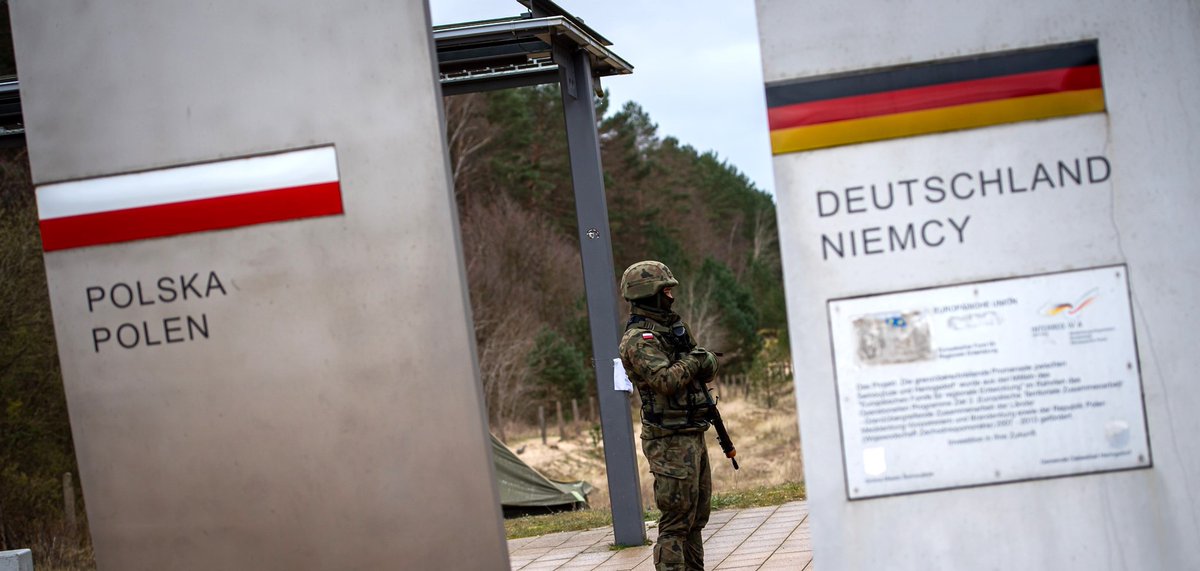
Tensions Rise on Germany-Poland Border Due to Migrants
Official figures from the Polish and German authorities reveal that Germany sends back several hundred migrants to Poland each month. The situation is becoming increasingly tense at the border between the two countries, while in many parts of Europe, resistance against migrants is growing.
In 2025, the rate of migrant returns was lower, but the numbers have increased since May, when Germany introduced new rules allowing asylum seekers to be rejected at the borders. Germany implemented a regulation that allows asylum seekers to be sent back at the border without their applications being processed.
The return of migrants has become a major political issue in Poland. The right-wing opposition has criticised the government for allowing the returns, and volunteer „citizen patrols” have formed have formed along the border to try to prevent returns.
Under mounting pressure, the Polish government announced it would reintroduce border checks with Germany and Lithuania, which have become routes for illegal migration. The Polish leadership justified the move as necessary to prevent the „uncontrolled influx of migrants”.
Germany plans to open a new „departure centre” on the border with Poland that will speed up the deportation of asylum seekers who have submitted claims in other EU member states but then come to Germany https://t.co/GCdNOoadcF
— Notes from Poland 🇵🇱 (@notesfrompoland) February 17, 2025
Germany currently rejects migrants to Poland in three different ways, two of which have been in place for years, while the third is relatively new and is now used on a much larger scale than the other two combined.
The first method is the EU’s Dublin Regulation, which stipulates that if an asylum seeker applies for international protection in one EU member state but moves to another before their application is processed, they can be returned to the country of arrival. The second, known as the „readmission procedure”, is based on a bilateral agreement between the two countries and allows for the return of other types of migrants who moved illegally from one country to the other.
According to border guard data obtained by TVN television, Afghan migrants topped the list, being returned to Poland in the highest numbers over the past two years under these two procedures.
However, the numbers returned under the Dublin and „readmission” procedures are dwarfed by a new type of return process introduced following a decision made by Germany in October 2023. This decision aimed to curb illegal migration by a reinstating controls at the Polish and Czech borders.
The measures have been in place ever since (and were extended to all of Germany’s borders in 2024). They allow German authorities to immediately turn back migrants who wish to cross the border but are not entitled to do so.
Niemcy zamiast obrażać, powinni podziękować obrońcom granic. Odkąd pojawiły się patrole obywatelskiej na Pomorzu Zachodnim – zakończył się także przemyt nielegalnych migrantów, przez tak zwanych „wozaków” z Białorusi przez Litwę – informują nieoficjalnie funkcjonariusze Straży… pic.twitter.com/3GGj9khn7f
— Tomasz Duklanowski (@TDuklanowski) July 3, 2025
According to data obtained by TVN from the German police, Germany turned back 9,369 people at the Polish on this basis in 2024.
Just over half of them were Ukrainian nationals (4,704), followed by Afghans (580), Syrians (470), Georgians (377), and Indians (224).
At the beginning of July, the German Federal Ministry of the Interior told the Polish news portal Wirtualna Polska that since 8 May, German authorities had turned back around 1,300 people at the Polish border, including about 130 asylum seekers.
Most Migrants Arrive from Somalia, Morocco, and Algeria
Since 2021, tens of thousands of migrants, mainly from Asia and Africa, have attempted to cross from Belarus into Poland, Lithuania, and Latvia, encouraged and assisted by Belarusian authorities. Those who manage to cross usually aim to continue westward to Germany.
However, the Rzeczpospolita daily notes that as Poland has made the Belarusian border more difficult to cross, migrants are increasingly trying to enter the EU via Latvia and Lithuania before continuing through Poland to Germany.
So far this year, 251 foreign nationals have been detained in Poland after entering from Lithuania—more than the total for 2024, when 175 such cases were recorded, a spokesperson for the border guard told the paper. Most of these migrants come from Somalia, Morocco, and Algeria.

